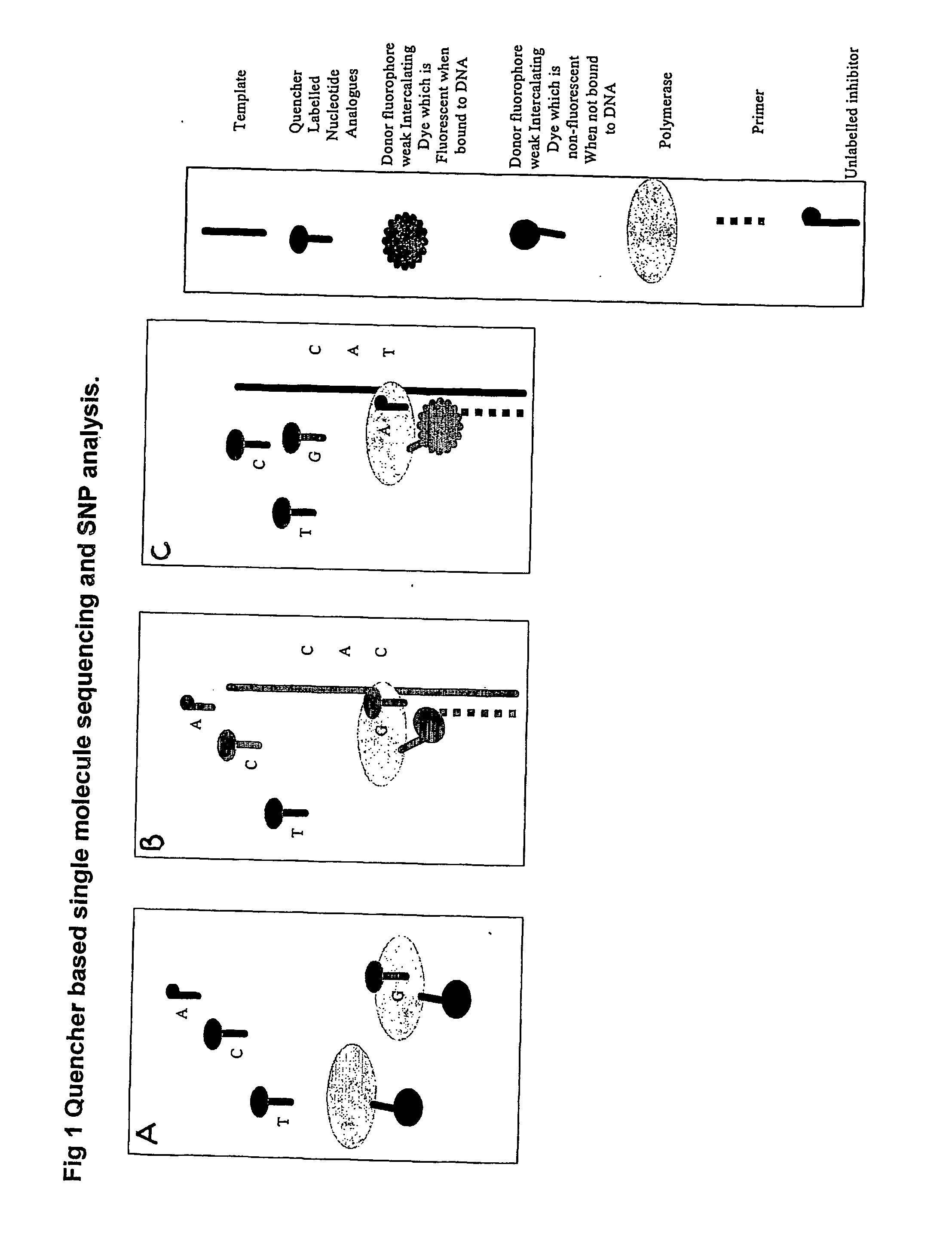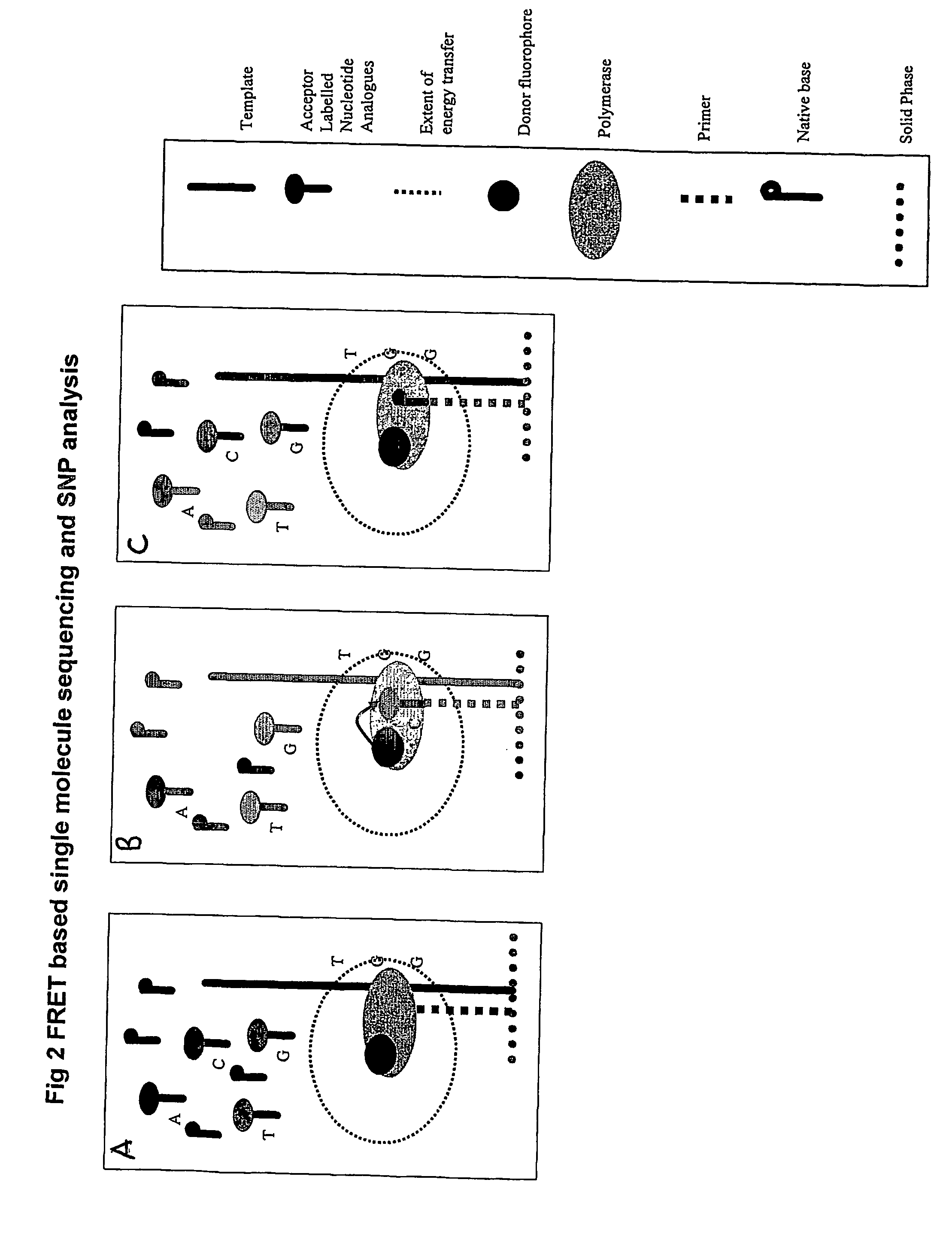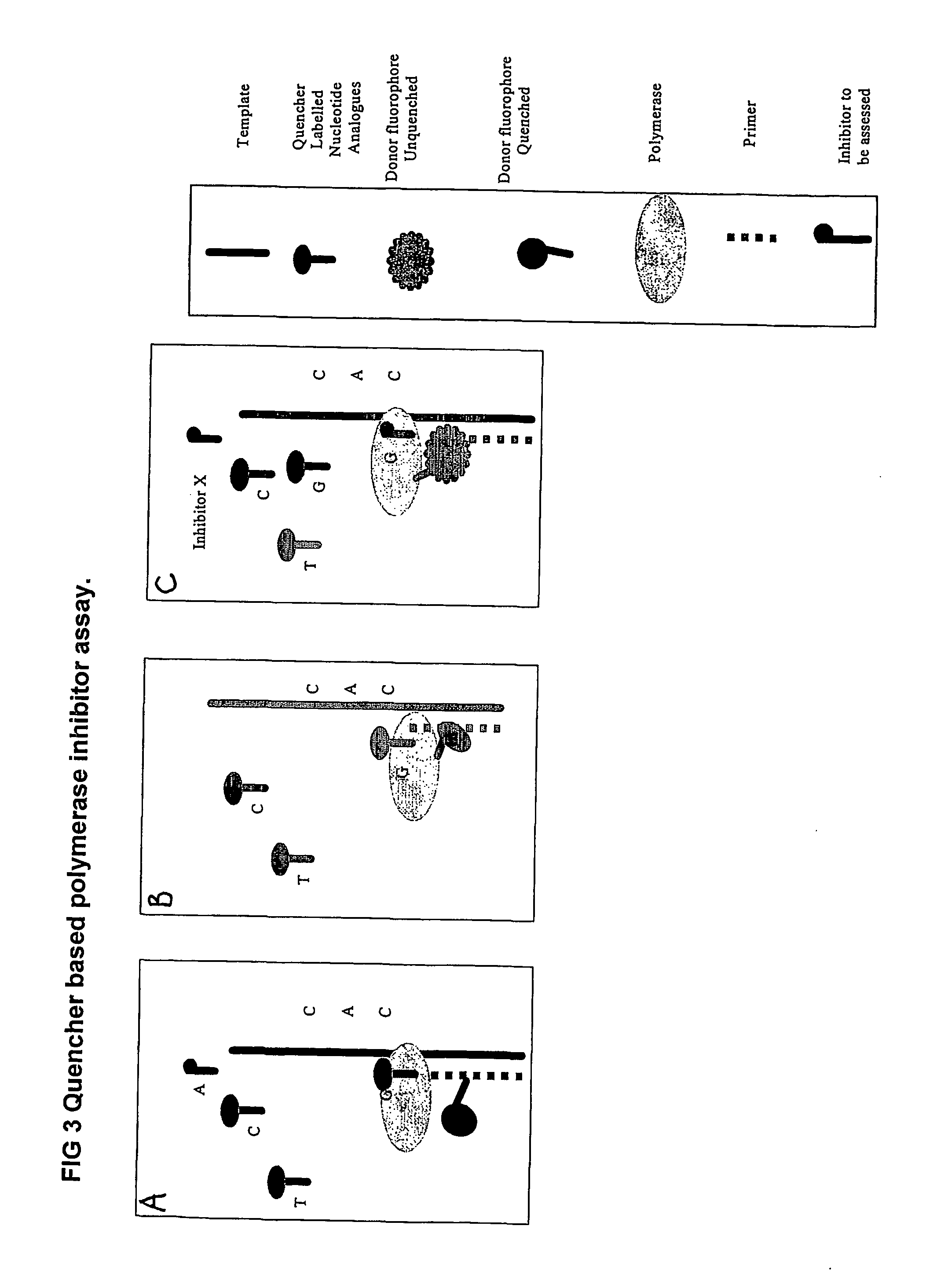Nucleic acid sequencing methods, kits and reagents
a technology of nucleic acid and kits, applied in the field of nucleic acid sequencing methods, kits and reagents, can solve the problems of negating and conjuguing the separation step and the other way around
- Summary
- Abstract
- Description
- Claims
- Application Information
AI Technical Summary
Benefits of technology
Problems solved by technology
Method used
Image
Examples
example 1
[0215] A protocol for detecting SNPs using conjugates of a DNTP or DNTP analogue and an intercalating dye is shown in FIG. 13.
Materials
[0216] Lambda Exonuclease (Reactive against 5′ phosphorylated DNA) (New England Biolabs), Therminator 9oN polymerase and Buffers (New England Biolabs, USA), Intercalator-Dye-DUTP conjugate (Custom Synthesised by Jena Biosciences, GmbH), Non-Incorporable DNTP; DUPNHPP (GmbH) and Pfu polymerase (Stratagene, Calif.).
[0217] A template which is representative of sample DNA was used having the sequence: 5′TGT CAC TCC TGA GCG ACG AAT CTG TAG ACC ACT TAT CCG TTT GCC TAT GCT.
[0218] Three first primers having sequences one base upstream of template base to be assessed) were as follows:
a)5′AGCATAGGCAAACGGATAAGTGG(Cognate to Adenosine)a1)dideoxy-terminated primer a)b)5′AGCATAGGCAAACGGATAAGT(cognate to Cytosine)b1)dideoxy terminated primer b)c)5′AGCATAGGCAAACGGATAAGTG(Cognate to Cytosine)
[0219] The second primer 2 was complementary to the first primer with...
example 2
[0222] Use of non-incorporable nucleotide triphosphates for SNP analysis and proof of principal for single molecule sequencing.
Materials
[0223] As example 1 above.
Method
(1) Dideoxy terminated primer and template were mixed at a ratio of 2:1 (final template concentrations were varied as shown)
(2) DGTP DCTP and DATP was added to a final concentration of 1 mM.
(3) 0.3 uM of Intercalator-Dye-DUTP conjugate was added to the system.
(4) In some samples non-incorporable DUTP (DUPNHPP) was added as shown.
(5) 300 nM Klenow exo- was added
(6) The system was heated to at 37° C.
example 2a
[0224] These results demonstrate that the system can detect the next base to be sequenced and also its sensitivity to the non incorporable nucleotide family DNPNHPP. Where the intercalating dye is conjugated to DNPNHPP or other nonincorporable entities, then the dideoxy terminated primer is unnecessary and will allow sequential sequencing if a limited concentration of native bases are added. This experiment also demonstrates that the intercalating dye conjugate has minimal fluorescence unless template-primer and polymerase are present allowing homogenous protocols to be developed.
T-P +T-P +T-P +Dye-T-P +Dye-dye-DUTP +Intercalate-Dye-DUTPDUTPPrimer1 +Dye-DUTPBufferDUTPPrimer-a1Primer-b1DUPNHPP75661831805210320
PUM
| Property | Measurement | Unit |
|---|---|---|
| wavelength | aaaaa | aaaaa |
| wavelength | aaaaa | aaaaa |
| wavelength | aaaaa | aaaaa |
Abstract
Description
Claims
Application Information
 Login to View More
Login to View More - R&D
- Intellectual Property
- Life Sciences
- Materials
- Tech Scout
- Unparalleled Data Quality
- Higher Quality Content
- 60% Fewer Hallucinations
Browse by: Latest US Patents, China's latest patents, Technical Efficacy Thesaurus, Application Domain, Technology Topic, Popular Technical Reports.
© 2025 PatSnap. All rights reserved.Legal|Privacy policy|Modern Slavery Act Transparency Statement|Sitemap|About US| Contact US: help@patsnap.com



